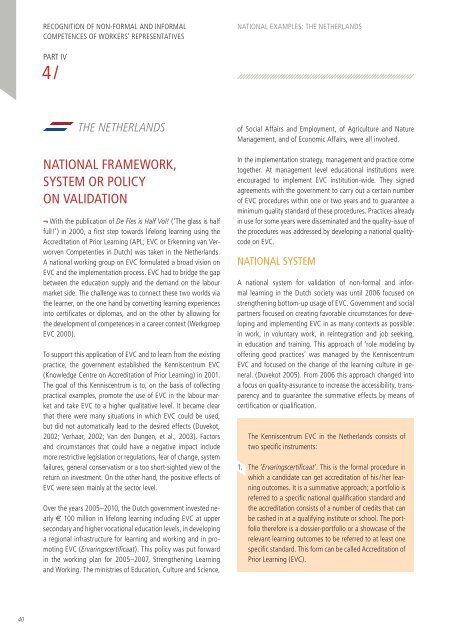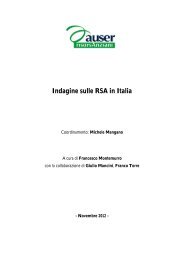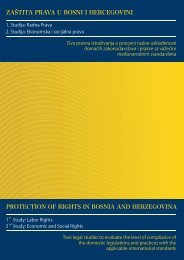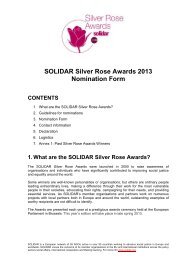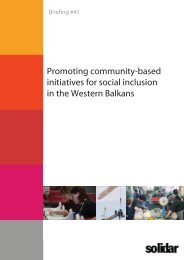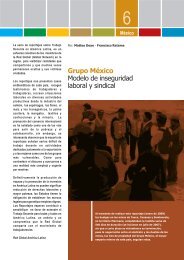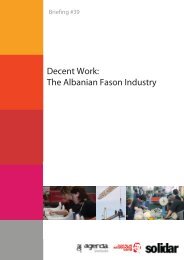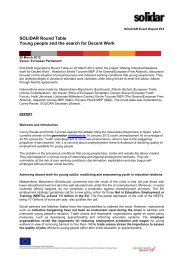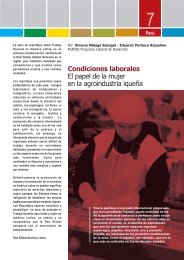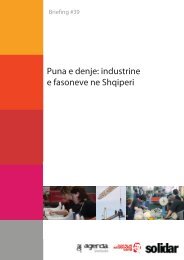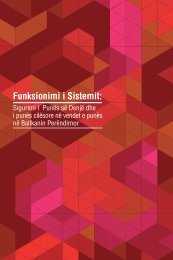RECOGNITION OF NON-FORMAL AND INFORMAL ... - Solidar
RECOGNITION OF NON-FORMAL AND INFORMAL ... - Solidar
RECOGNITION OF NON-FORMAL AND INFORMAL ... - Solidar
You also want an ePaper? Increase the reach of your titles
YUMPU automatically turns print PDFs into web optimized ePapers that Google loves.
<strong>RECOGNITION</strong> <strong>OF</strong> <strong>NON</strong>-<strong>FORMAL</strong> <strong>AND</strong> IN<strong>FORMAL</strong><br />
COMPETENCES <strong>OF</strong> WORKERS’ REPRESENTATIVES<br />
NATIONAL EXAMPLES: THE NETHERL<strong>AND</strong>S<br />
PART IV<br />
4 /<br />
THE NETHERL<strong>AND</strong>S<br />
NATIONAL FRAMEWORK,<br />
SYSTEM OR POLICY<br />
ON VALIDATION<br />
¬ With the publication of De Fles is Half Vol! (‘The glass is half<br />
full!’) in 2000, a fi rst step towards lifelong learning using the<br />
Accreditation of Prior Learning (APL; EVC or Erkenning van Verworven<br />
Competenties in Dutch) was taken in the Netherlands.<br />
A national working group on EVC formulated a broad vision on<br />
EVC and the implementation process. EVC had to bridge the gap<br />
between the education supply and the demand on the labour<br />
market side. The challenge was to connect these two worlds via<br />
the learner, on the one hand by converting learning experiences<br />
into certifi cates or diplomas, and on the other by allowing for<br />
the development of competences in a career context (Werkgroep<br />
EVC 2000).<br />
To support this application of EVC and to learn from the existing<br />
practice, the government established the Kenniscentrum EVC<br />
(Knowledge Centre on Accreditation of Prior Learning) in 2001.<br />
The goal of this Kenniscentrum is to, on the basis of collecting<br />
practical examples, promote the use of EVC in the labour market<br />
and take EVC to a higher qualitative level. It became clear<br />
that there were many situations in which EVC could be used,<br />
but did not automatically lead to the desired effects (Duvekot,<br />
2002; Verhaar, 2002; Van den Dungen, et al., 2003). Factors<br />
and circumstances that could have a negative impact include<br />
more restrictive legislation or regulations, fear of change, system<br />
failures, general conservatism or a too short-sighted view of the<br />
return on investment. On the other hand, the positive effects of<br />
EVC were seen mainly at the sector level.<br />
Over the years 2005–2010, the Dutch government invested nearly<br />
€ 100 million in lifelong learning including EVC at upper<br />
secondary and higher vocational education levels, in developing<br />
a regional infrastructure for learning and working and in promoting<br />
EVC (Ervaringscertifi caat). This policy was put forward<br />
in the working plan for 2005–2007, Strengthening Learning<br />
and Working. The ministries of Education, Culture and Science,<br />
of Social Affairs and Employment, of Agriculture and Nature<br />
Management, and of Economic Affairs, were all involved.<br />
In the implementation strategy, management and practice come<br />
together. At management level educational institutions were<br />
encouraged to implement EVC institution-wide. They signed<br />
agreements with the government to carry out a certain number<br />
of EVC procedures within one or two years and to guarantee a<br />
minimum quality standard of these procedures. Practices already<br />
in use for some years were disseminated and the quality-issue of<br />
the procedures was addressed by developing a national qualitycode<br />
on EVC.<br />
NATIONAL SYSTEM<br />
A national system for validation of non-formal and informal<br />
learning in the Dutch society was until 2006 focused on<br />
strengthening bottom-up usage of EVC. Government and social<br />
partners focused on creating favorable circumstances for developing<br />
and implementing EVC in as many contexts as possible:<br />
in work, in voluntary work, in reintegration and job seeking,<br />
in education and training. This approach of ‘role modeling by<br />
offering good practices’ was managed by the Kenniscentrum<br />
EVC and focused on the change of the learning culture in general.<br />
(Duvekot 2005). From 2006 this approach changed into<br />
a focus on quality-assurance to increase the accessibility, transparency<br />
and to guarantee the summative effects by means of<br />
certifi cation or qualifi cation.<br />
The Kenniscentrum EVC in the Netherlands consists of<br />
two specifi c instruments:<br />
1. The ‘Ervaringscertifi caat’. This is the formal procedure in<br />
which a candidate can get accreditation of his / her learning<br />
outcomes. It is a summative approach; a portfolio is<br />
referred to a specifi c national qualifi cation standard and<br />
the accreditation consists of a number of credits that can<br />
be cashed in at a qualifying institute or school. The portfolio<br />
therefore is a dossier-portfolio or a showcase of the<br />
relevant learning outcomes to be referred to at least one<br />
specifi c standard. This form can be called Accreditation of<br />
Prior Learning (EVC).<br />
40


